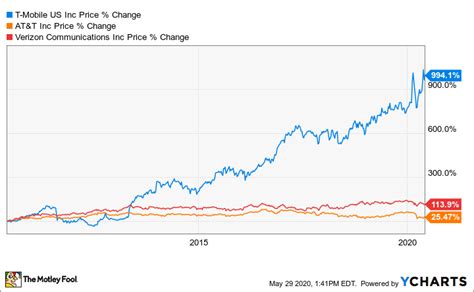What is GDP Growth Rate?
Gross domestic product (GDP) growth rate measures the percentage change in the total value of goods and services produced within a country over a specific period of time. It is a key indicator of economic health, reflecting changes in production, consumption, and investment activities.

Current US GDP Growth Rate
According to the Bureau of Economic Analysis (BEA), the US economy grew at an annual rate of 2.9% in the fourth quarter of 2022. For the full year 2022, GDP increased by 2.1%.
Forecasts for 2023-2025
The International Monetary Fund (IMF) projects US GDP growth of 1.4% in 2023, 1.9% in 2024, and 1.5% in 2025. The World Bank estimates slightly higher growth rates of 1.7% in 2023, 2.1% in 2024, and 1.7% in 2025.
Key Drivers of Growth
Consumer spending: Consumer spending accounts for about two-thirds of US GDP. A strong job market and rising wages support consumer spending.
Business investment: Capital spending on new equipment and infrastructure contribute to GDP growth. Low interest rates and government incentives encourage business investment.
Government spending: Government spending on infrastructure, education, and healthcare can boost GDP. However, high government spending can lead to budget deficits.
Exports: A favorable trade balance (exports minus imports) contributes to GDP growth. The strength of global demand affects US exports.
Inventory changes: Increases in inventories boost GDP, while inventory drawdowns reduce it.
Trends and Challenges
Demographic shifts: An aging population and declining birth rates can slow GDP growth as the labor force shrinks.
Technological advancements: Automation and artificial intelligence (AI) can increase productivity and GDP growth, but also displace workers.
Climate change: Extreme weather events and climate-related regulations can impact economic activity.
Global economic headwinds: Global economic slowdowns, trade wars, and geopolitical conflicts can hurt US GDP growth.
Strategies for Enhancing Growth
Investing in education and skills development: Improving human capital by investing in education and training programs enhances productivity and innovation.
Promoting innovation and entrepreneurship: Encouraging research and development (R&D), fostering business startups, and removing regulatory barriers support innovation.
Improving infrastructure: Modernizing transportation, energy, and communications infrastructure boosts productivity and economic growth.
Balancing fiscal and monetary policy: Prudent fiscal and monetary policies promote sustainable growth without excessive inflation or debt accumulation.
Reforming healthcare and immigration: Addressing rising healthcare costs and attracting skilled immigrants can improve economic well-being.
Tips and Tricks
- Monitor economic indicators: Pay attention to key GDP growth indicators, such as consumer confidence, manufacturing data, and job creation.
- Understand the drivers of growth: Identify the factors that are most likely to contribute to GDP growth.
- Plan for headwinds: Be aware of potential challenges that could slow economic growth and develop strategies to mitigate risks.
- Innovate and adapt: Embrace technological advancements and new ideas to stay ahead of the competition and drive growth.
- Collaborate with stakeholders: Engage with businesses, government agencies, and educational institutions to foster economic growth.
Common Mistakes to Avoid
- Overreliance on one sector: Do not depend too heavily on a single industry or sector for GDP growth.
- Ignoring external factors: Global economic trends and geopolitical events can impact US GDP growth.
- Short-term thinking: Avoid making policy decisions that prioritize short-term growth at the expense of long-term sustainability.
- Ignoring income inequality: High levels of income inequality can limit economic growth by reducing consumer spending and social mobility.
- Underestimating the importance of education: A skilled and educated workforce is essential for sustained GDP growth.
Case Study: China’s Economic Growth
China has experienced remarkable GDP growth over the past few decades, averaging over 10% annually. This growth has been driven by a combination of factors, including:
- Export-led growth: China’s focus on exports has fueled its manufacturing sector and boosted GDP.
- Government investment: Massive government spending on infrastructure and industrial development has supported growth.
- Urbanization: Rapid urban migration has created new jobs and expanded consumer markets.
- Foreign direct investment: China has attracted significant foreign direct investment, bringing in capital and technology.
Conclusion
Understanding the US GDP growth rate and its key drivers is crucial for policymakers and businesses alike. A sustainable and resilient economy requires a comprehensive approach that includes investments in education, innovation, infrastructure, and balanced policies. By addressing current challenges and embracing future trends, the US can position itself for continued economic growth and prosperity.
Tables
Table 1: US GDP Growth Rates by Quarter (2022-2023)
| Quarter | Annualized GDP Growth Rate |
|---|---|
| Q1 2022 | 5.7% |
| Q2 2022 | 3.7% |
| Q3 2022 | 4.2% |
| Q4 2022 | 2.9% |
| Q1 2023 | 1.4% (estimate) |
Table 2: US GDP Growth Forecasts (2023-2025)
| Year | IMF Forecast | World Bank Forecast |
|---|---|---|
| 2023 | 1.4% | 1.7% |
| 2024 | 1.9% | 2.1% |
| 2025 | 1.5% | 1.7% |
Table 3: Key Drivers of US GDP Growth
| Driver | Contribution to GDP |
|---|---|
| Consumer spending | 66% |
| Business investment | 16% |
| Government spending | 12% |
| Exports | 13% |
| Inventory changes | 4% |
Table 4: Strategies for Enhancing US GDP Growth
| Strategy | Impact |
|---|---|
| Investing in education and skills development | Increased productivity, innovation |
| Promoting innovation and entrepreneurship | New technologies, business startups, job creation |
| Improving infrastructure | Reduced transportation costs, increased productivity |
| Balancing fiscal and monetary policy | Inflation control, sustainable growth |
| Reforming healthcare and immigration | Reduced healthcare costs, increased skilled labor force |



